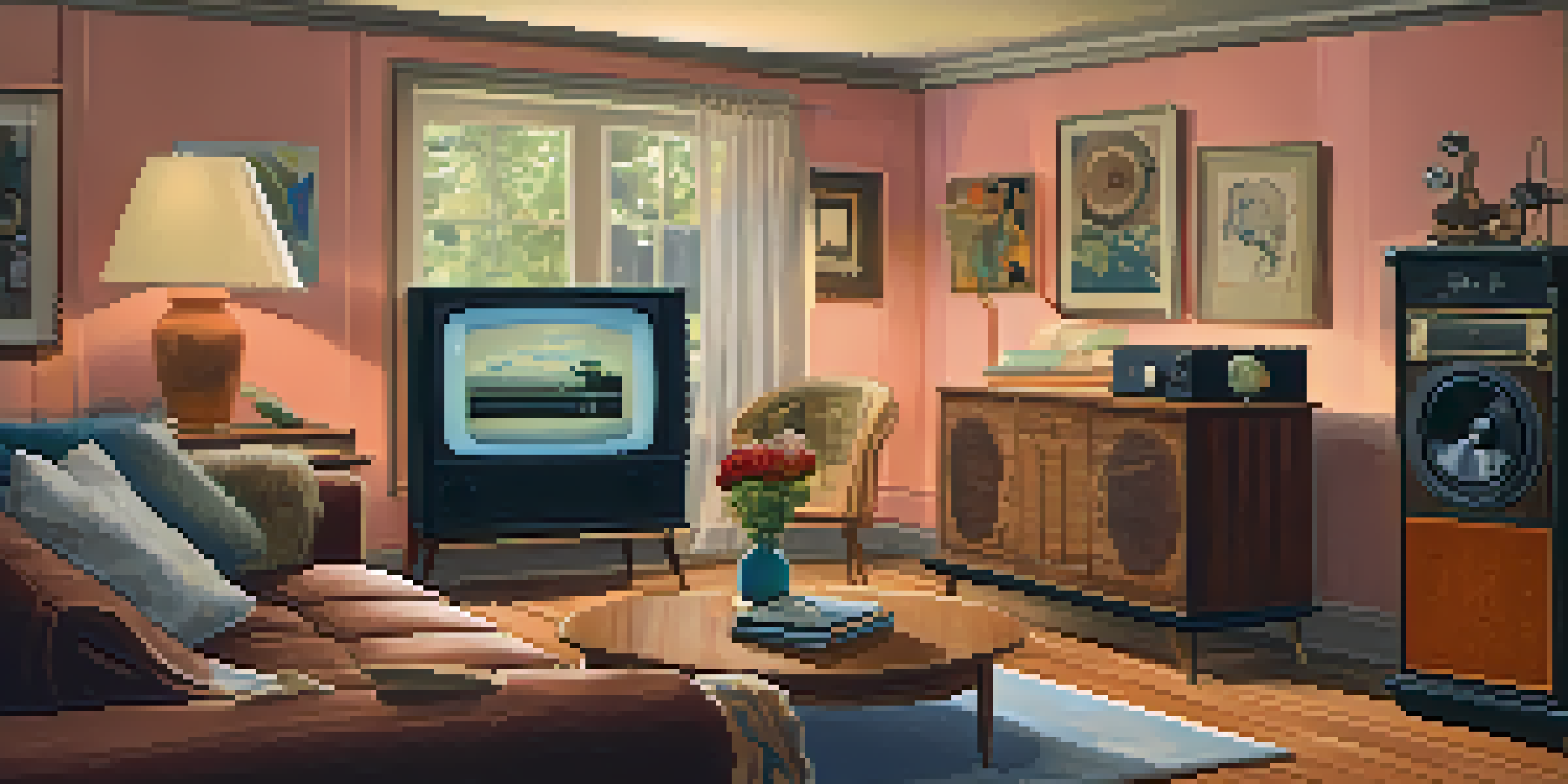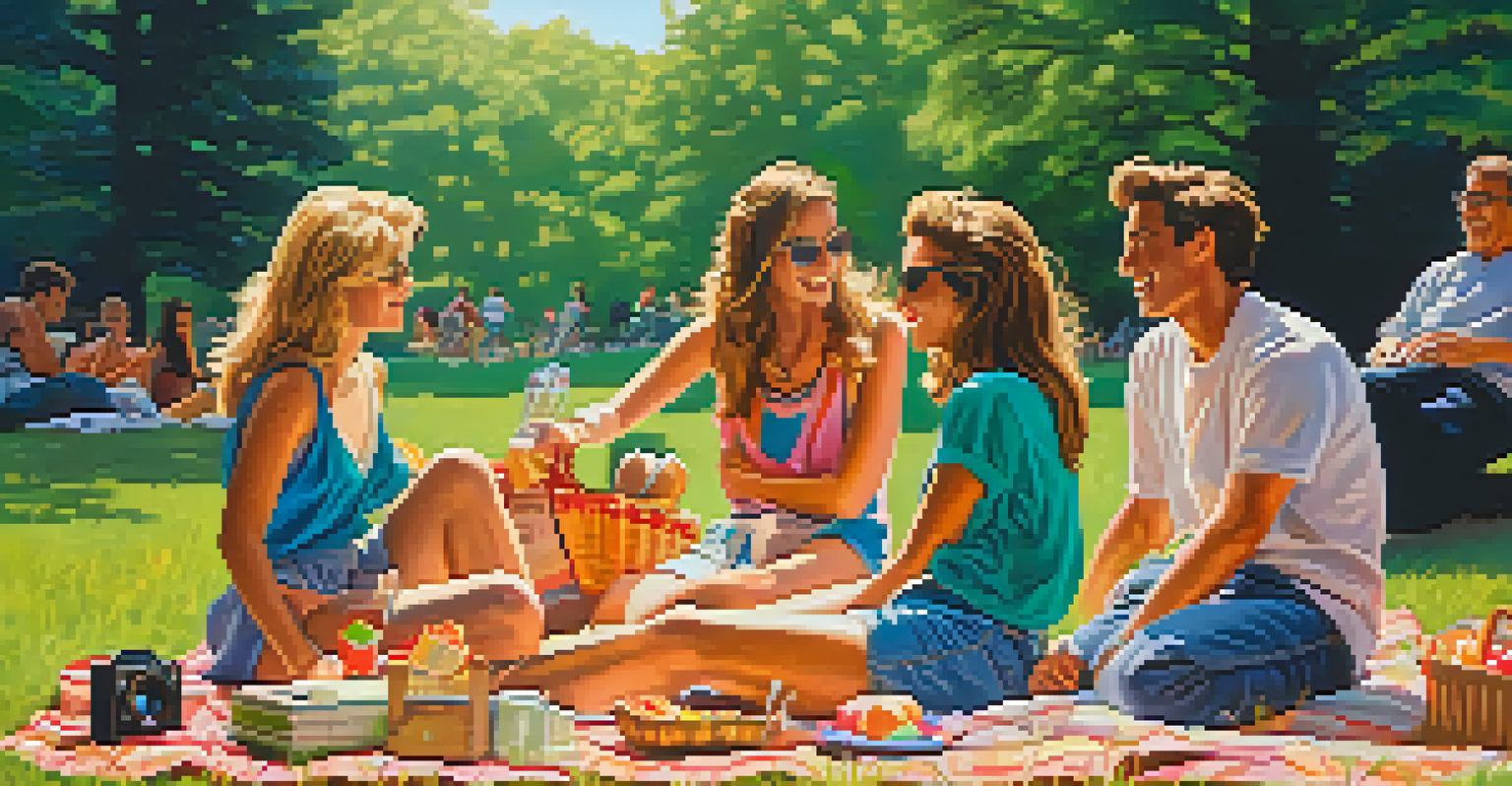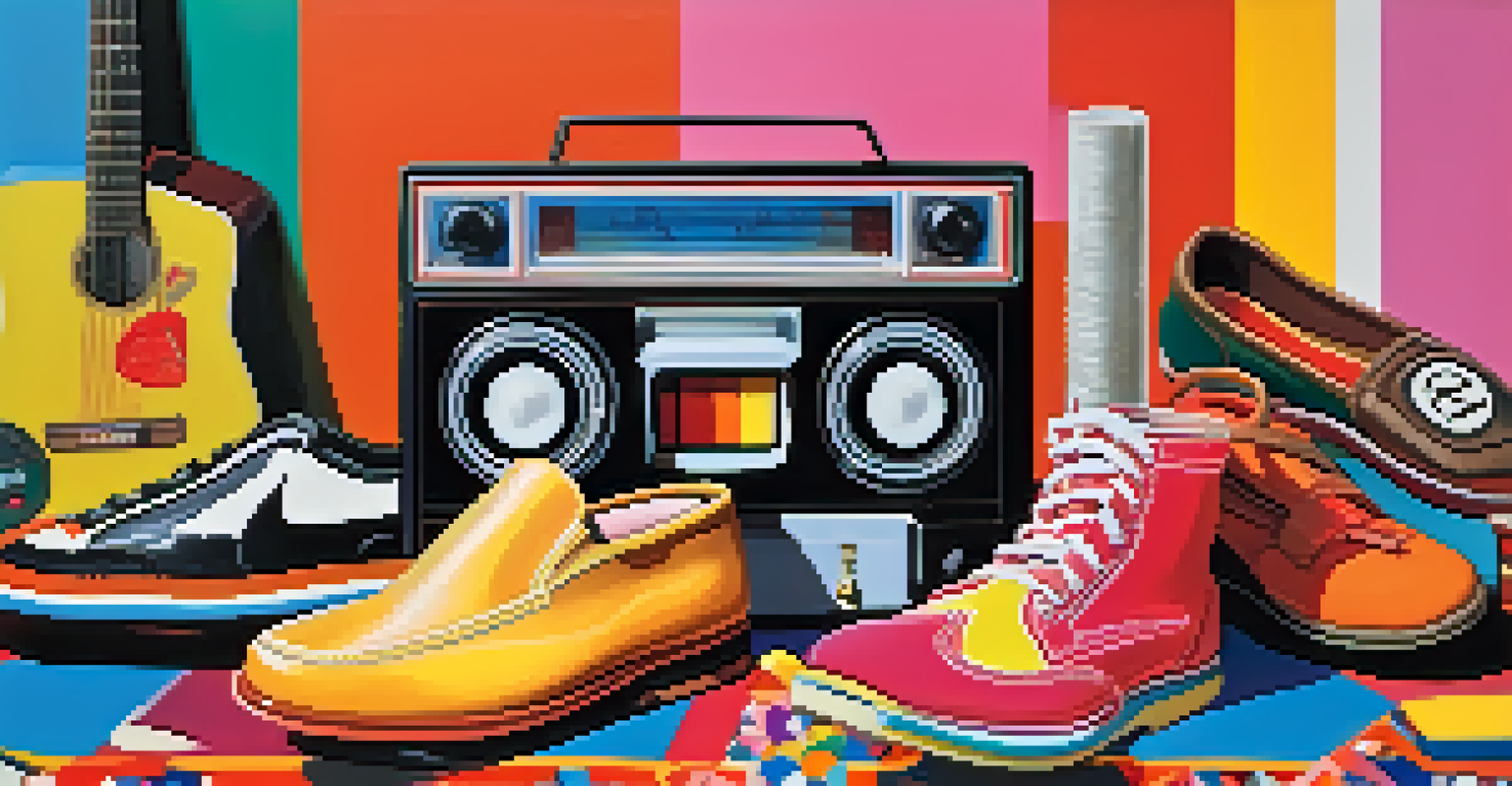The Role of Nostalgia in Audience Film Reception

Understanding Nostalgia and Its Emotional Pull
Nostalgia is a powerful emotional experience that can transport us back to cherished moments in our past. It's that warm feeling we get when we think about our childhood, beloved movies, or music that defined a generation. This emotional connection can significantly influence how we perceive and enjoy films, making nostalgia a crucial element in audience reception.
Nostalgia is a file that removes the rough edges from the good old days.
When filmmakers tap into nostalgia, they often evoke memories that resonate deeply with viewers. For instance, a film that references iconic elements from the '80s can trigger fond memories of simpler times, enhancing the viewer's emotional engagement. This connection can lead to a more immersive experience, where the audience feels not just entertained but also emotionally invested.
Moreover, nostalgia can create a sense of belonging, as people often share similar memories associated with cultural phenomena. This communal experience makes films that leverage nostalgia particularly impactful, as audiences find joy in reminiscing together. Ultimately, nostalgia serves as a bridge linking past experiences to present enjoyment.
The Rise of Reboots and Remakes in Cinema
In recent years, the film industry has seen a surge in reboots and remakes, often driven by nostalgia. Studios recognize that familiar stories can attract audiences who have a fondness for the original films. By reimagining beloved classics, filmmakers aim to introduce these stories to new generations while also appealing to the nostalgia of older audiences.

Take, for example, the recent reboots of franchises like 'Ghostbusters' or 'Jurassic Park.' These films not only bring back familiar characters and storylines but also evoke memories of the original films, creating a nostalgic experience. This strategy can be a double-edged sword, as it may lead to high expectations from fans who want to relive those cherished moments.
Nostalgia Shapes Film Experiences
Nostalgia enhances audience engagement by evoking cherished memories, making films more emotionally resonant.
While some might argue that reboots lack originality, they serve an essential purpose in keeping stories alive. By blending nostalgia with contemporary storytelling techniques, filmmakers can create a unique cinematic experience that resonates with both old and new audiences. This blend makes nostalgia a vital marketing tool in attracting viewers to the box office.
How Soundtracks Enhance Nostalgic Experiences
Soundtracks play a pivotal role in reinforcing nostalgia in films. The right song can evoke strong emotions and transport viewers back to specific moments in their lives. Think about how the theme from 'The Breakfast Club' brings back memories of high school for many; it’s a perfect example of how music can deepen our connection to film.
Nostalgia isn't what it used to be.
When filmmakers curate soundtracks filled with iconic hits from the past, they tap into a wellspring of emotions. This strategy not only enhances the storytelling but also creates a multi-sensory experience that resonates on a personal level. Audiences are more likely to enjoy a film when its soundtrack reminds them of significant moments in their own lives.
Moreover, soundtracks can also introduce younger audiences to the music of previous decades. When a contemporary film features classic songs, it acts as a bridge between generations, allowing for shared experiences. This connection fosters a sense of nostalgia that enriches the overall film-watching experience.
The Role of Visual Styles in Evoking Nostalgia
Visual styles play a significant role in how nostalgia is conveyed in film. Filmmakers often employ specific techniques, such as color grading or camera filters, to mimic the look of films from the past. This aesthetic choice can instantly evoke feelings of nostalgia, as viewers associate specific visual cues with their memories of older films.
For example, the use of grainy textures and vintage color palettes can remind audiences of films from the '70s and '80s. This attention to detail helps create an authentic nostalgic atmosphere, encouraging viewers to immerse themselves in the story. Such techniques are not just stylistic; they serve to evoke emotions tied to the era being referenced.
Reboots Leverage Nostalgic Appeal
The rise of reboots and remakes in cinema reflects studios' understanding of nostalgia as a tool to attract both new and older audiences.
Additionally, the incorporation of retro design elements in set pieces and costumes can further enhance this nostalgic experience. By visually transporting audiences back in time, filmmakers can create a deeper emotional connection with their films. This intentional use of visual styles underscores nostalgia's importance in shaping how audiences receive and relate to films.
How Audience Demographics Influence Nostalgic Reception
Audience demographics play a crucial role in how nostalgia is received in film. Different generations have unique cultural touchstones that inform their nostalgic experiences. For instance, Millennials might feel nostalgic for the pop culture of the '90s, while Baby Boomers may have fond memories of the '60s and '70s.
Filmmakers must consider these demographic nuances when crafting their narratives. A film that references specific cultural phenomena from a particular era may resonate more with audiences who lived through it. This understanding allows filmmakers to create content that speaks directly to the emotions and experiences of their target audience.
Moreover, the rise of social media has amplified these nostalgic connections, enabling audiences to share their experiences and memories. This shared engagement can create a sense of community among viewers, further enhancing the impact of nostalgia in film reception. Ultimately, recognizing audience demographics is key to harnessing nostalgia effectively.
Balancing Nostalgia with Fresh Storytelling
While nostalgia can be a powerful tool, it’s essential for filmmakers to strike a balance between nostalgia and innovative storytelling. Relying solely on familiar elements can lead to predictable narratives that fail to engage audiences. Instead, filmmakers should aim to honor the past while also offering fresh perspectives and original storylines.
A successful example of this balance can be seen in films like 'Stranger Things,' which combines nostalgic references with a unique plot. By integrating familiar tropes from the '80s while introducing original characters and story arcs, the show captures the essence of nostalgia without feeling stale. This approach keeps audiences intrigued and invested in the story.
Visual Styles Evoke Nostalgia
Filmmakers use specific visual techniques, such as color grading and retro design, to create a nostalgic atmosphere that connects with viewers.
Furthermore, fresh storytelling can reinvigorate classic themes, providing new insights and relatable experiences. By merging nostalgia with innovative ideas, filmmakers can create memorable films that resonate across generations. This balance ensures that while audiences may be drawn in by nostalgia, they remain engaged by the originality of the storytelling.
Nostalgia's Lasting Impact on Film Culture
Nostalgia doesn't just influence individual film reception; it also shapes the broader film culture. As audiences increasingly seek out films that evoke memories, studios are more likely to invest in projects that capitalize on nostalgic elements. This trend can lead to a resurgence of interest in certain genres or eras of film, impacting what gets made and how it’s marketed.
Moreover, nostalgia can spark conversations about cultural identity and shared experiences. Films that explore themes of nostalgia often encourage audiences to reflect on their past and how it has shaped their lives. This dialogue adds depth to the cinematic experience, allowing viewers to connect on a more profound level.

As a result, nostalgia continues to play an integral role in shaping film culture, influencing everything from production choices to audience engagement. By understanding its impact, filmmakers and audiences alike can appreciate the power of nostalgia in crafting meaningful cinematic experiences.